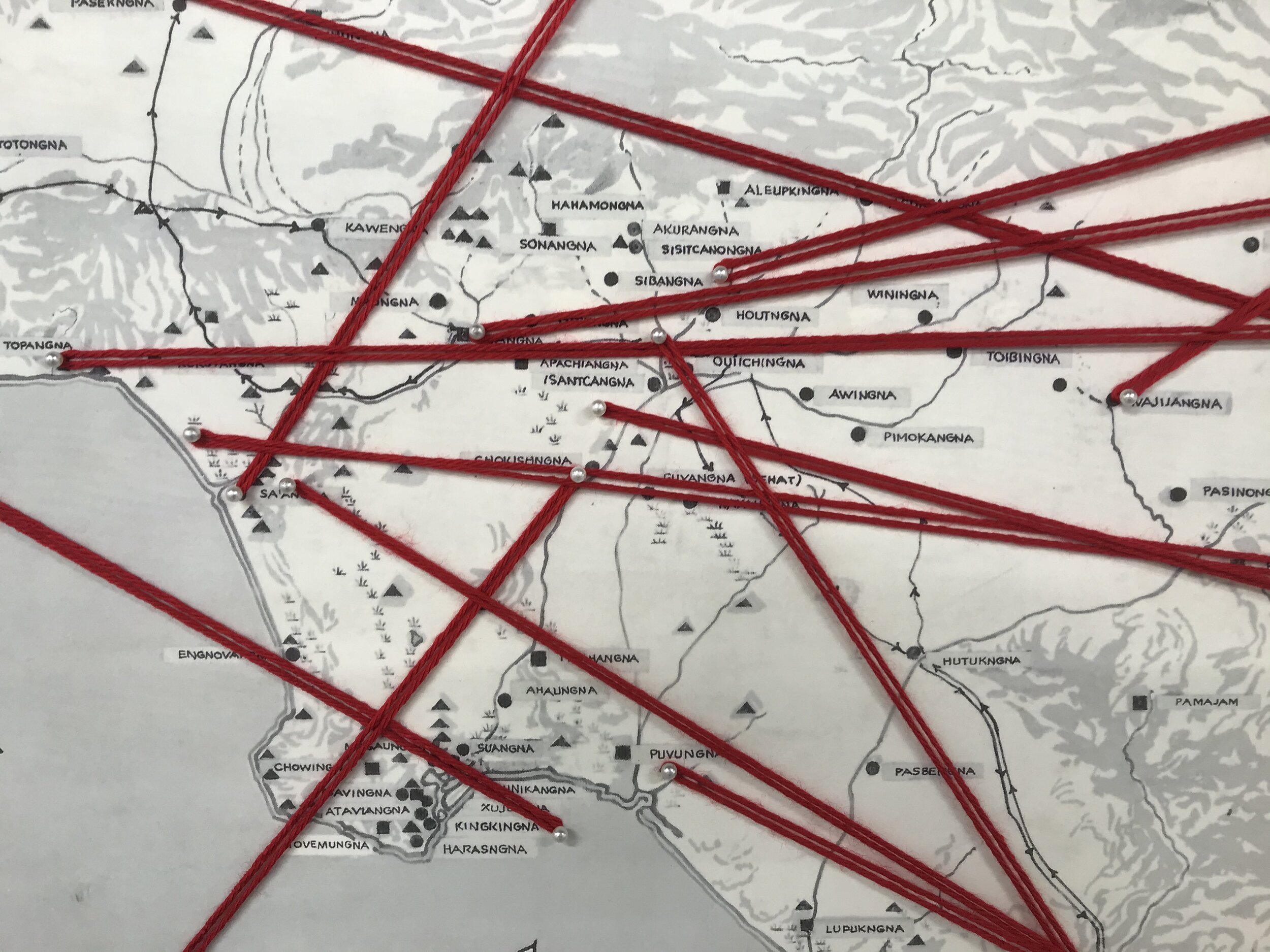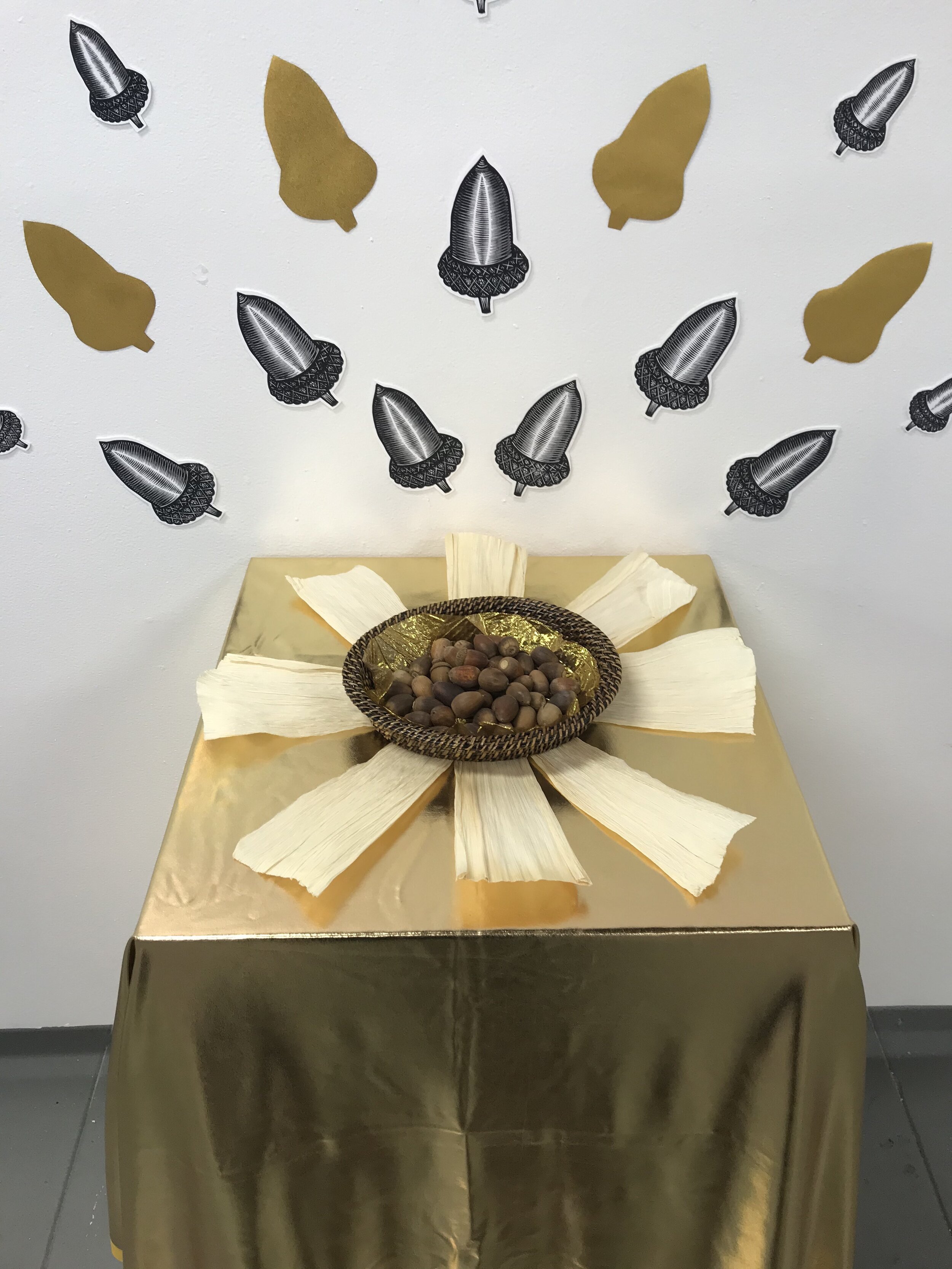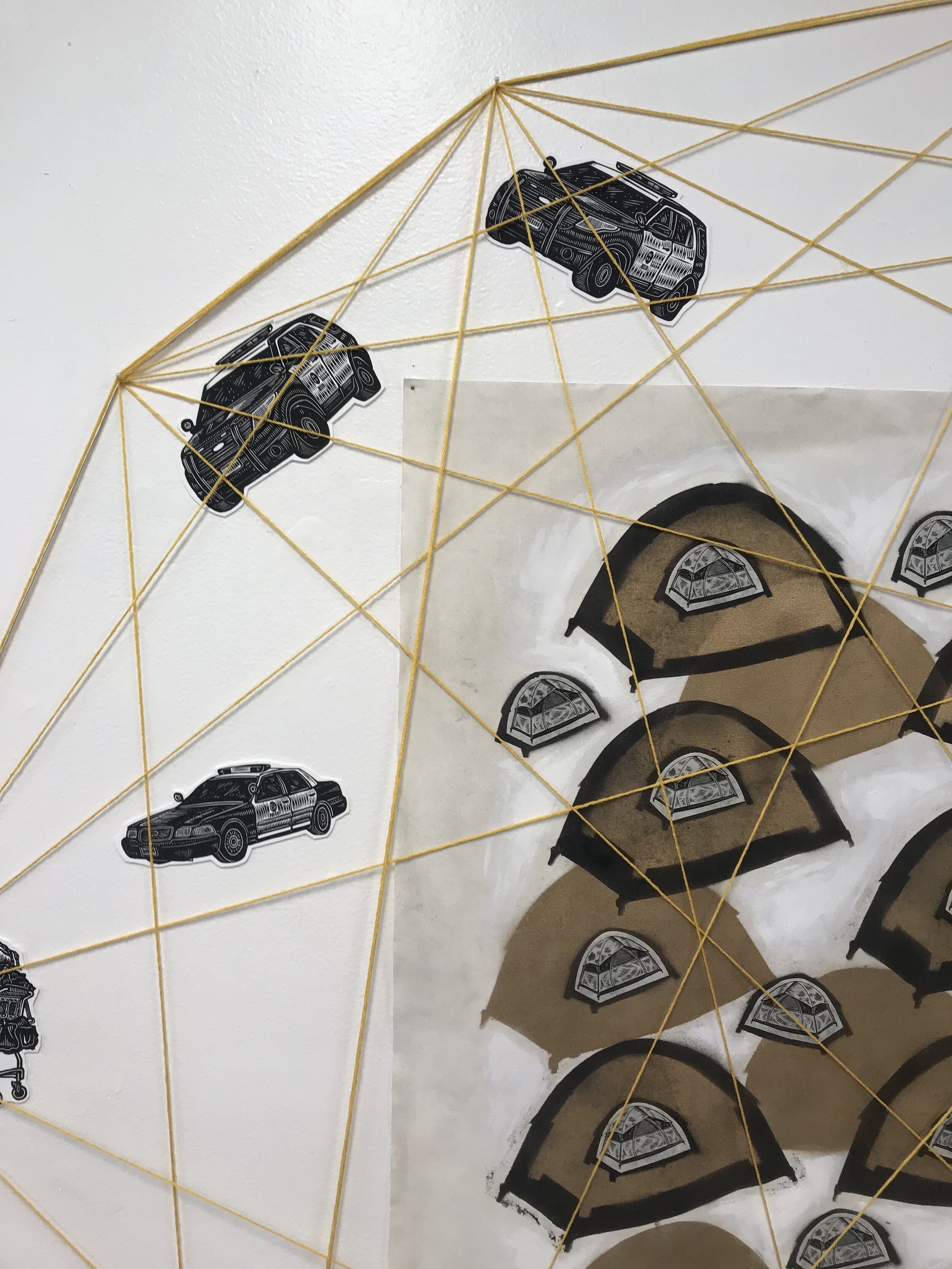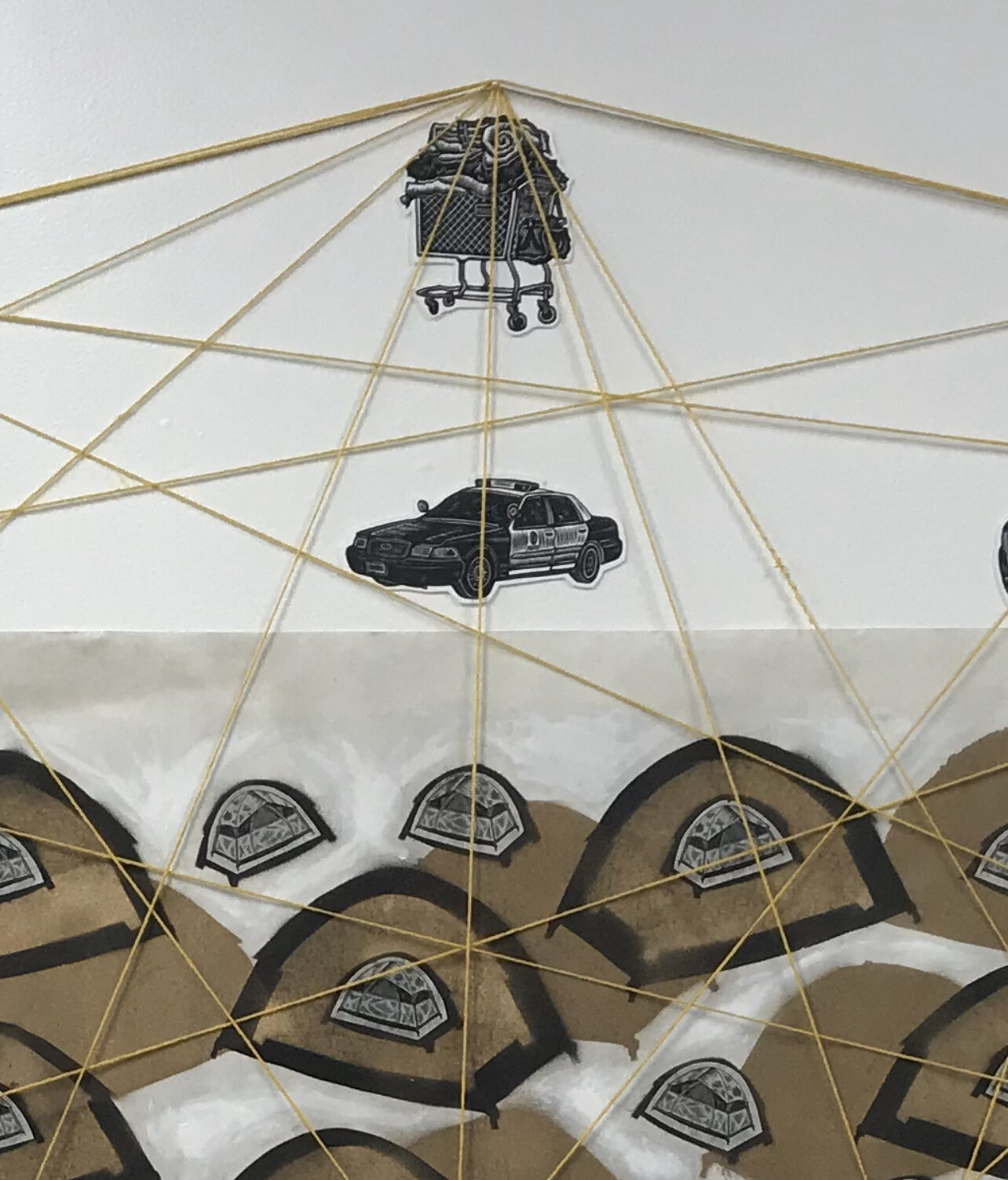Intersections
Held from December 2020 to February 2021, “Intersections” was a group show that included the work of William Camargo and Jonah Elijah, and was shown at Self Help Graphics and Art. The work exhibited in the show was intended for our respective MFA thesis exhibits (which were affected/cancelled due to Covid 19 restrictions), and my contribution to the show was three print-based installations that explored the long history of displacement in what we now call the Los Angeles Basin. Using fiber art, sculpture, and installation, I articulated a relationship between the overlapping regimes of displacement that have shaped this urban metropolis since the arrival of Spanish “explorers” in 1769 (the year of the Portola Expedition) to the contemporary moment.
(scroll down for images of work, and artist statement)

"Geometries of Displacement," linocut, knitting yarn, hand-embroidered archival maps, 2020. Dimensions variable.

Detail of "Geometries of Displacement."

Detail of "Geometries of Displacement."

Detail of "Geometries of Displacement."

Detail of "Geometries of Displacement."

Detail of "Geometries of Displacement."

Detail of "Geometries of Displacement."

Detail of "Geometries of Displacement."

Detail of "Geometries of Displacement."

Detail of "Geometries of Displacement."

Detail of "Geometries of Displacement."

Detail of "Geometries of Displacement."

"An Offering to Our Tongva Relatives," linocut based serigraphy, wicker basket, corn husks, gold fabric, gold origami paper, 2020. Dimensions variable.

Detail of "An Offering to Our Tongva Relatives."

"Los Angeles Real Estate Landscape," linocut, linocut-based serigraphy, spray paint, acrylic, canvas, knitting yarn, 2020. Dimensions variable.

Detail of "Los Angeles Real Estate Landscape"

Detail of "Los Angeles Real Estate Landscape"

Detail of "Los Angeles Real Estate Landscape"
Artist Statement:
My interdisciplinary practice interrogates the history of displacement in the Americas, starting with Indigenous dispossession and genocide to current issues around gentrification and homelessness. At its root, however, it is a critical reflection on the commodification of land as private property and the issues that arise out of this. I articulate these subjects through printmaking, installation, and sculpture, to outline the contested use of space and the ways that social and political policies have shaped our contemporary urban environment. In my estimation, current efforts to stop gentrification begin with this struggle over land ownership, which is itself a colonial construct that runs counter to indigenous notions of land stewardship. Moreover, as an artist with a background in history, I use my previous training as a historian to find a mode of creative production that taps into the collective constant re-imagining of the past. In my work, for instance, I use representational figuration in order to conjure iconographic placeholders that speak to particular understandings of the past, and our relationship to it, and make the case that understanding change across times helps to better elucidate our contemporary political moment. My goal is to exercise my own historical imagination and disrupt the notion that writing is the only, or primary, way of producing historical knowledge.
In the installation titled, “Geometries of Displacement,” I use digitally-reproduced archival maps of Los Angeles County dating from 1769 to the contemporary moment, which represent different historical periods in the development of the region. Embroidery is used to emphasize the shapes created by different social policies of their respective times, including colonial land grants, racialized redlining, and gentrification patterns. One map, containing the original Indigenous place names of the region, has not been embroidered, indicating a starting point prior to Western notions of land as a private commodity. Around these maps, I have placed linocut-based iconographic references to different historical epochs and connected them to the maps with red string. What results is a new geometry based on the intersection of the points on the map with the images on the wall, and a rupturing of linear notions of time and historical ‘progress.’ The stitching of the embroidery operates as a mechanism for highlighting the social creation of space, but also operates as a form of matrilineal mark-making that harkens back to the women in my family who would practice the form for their own creative expression. Thus, it becomes a link to my own past, and to my relationship to this history.